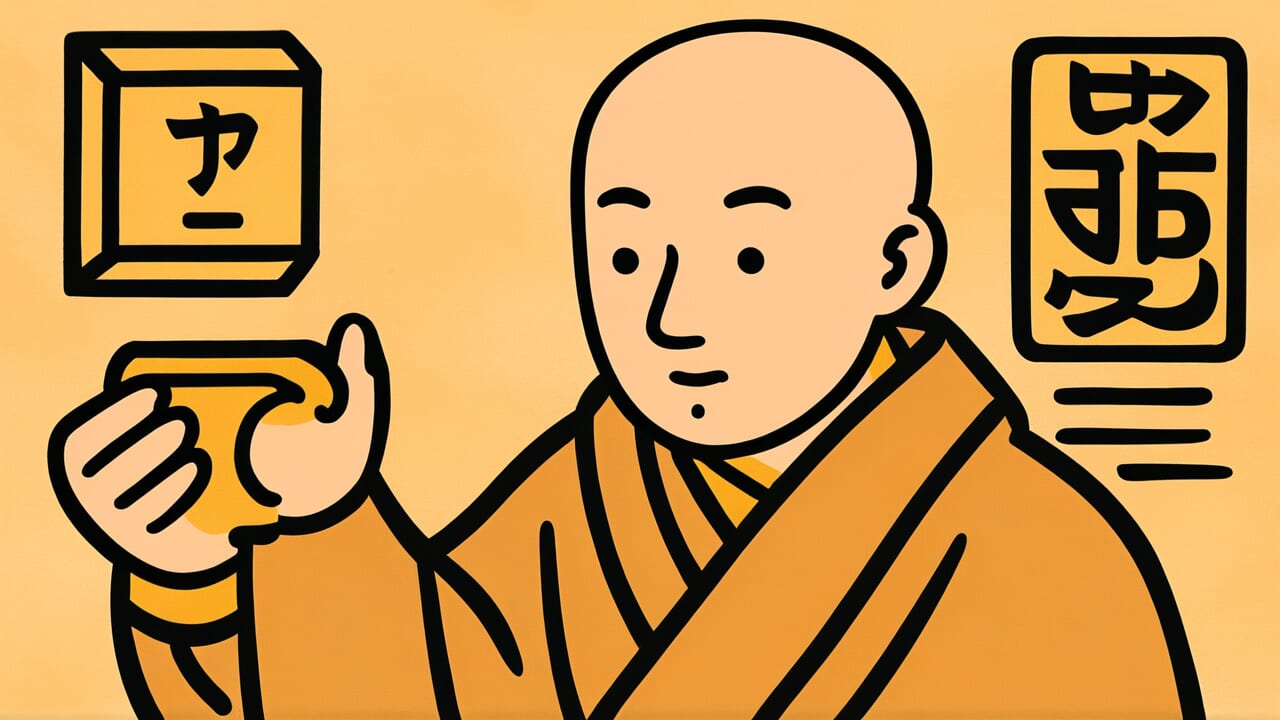How to Read “Metaphors don’t lie and monks have no hair”
Tatoe ni uso nashi bōzu ni ke nashi
Meaning of “Metaphors don’t lie and monks have no hair”
This proverb means that metaphors are based on clear facts without lies or exaggeration.
Just as everyone can see that monks have no hair, the examples used in metaphors must be undeniable truths.
People use this proverb when they want to emphasize the reliability of their argument or explanation.
It tells the listener, “Everything I’m saying, including the examples I’ve given, is based on solid facts.”
Today, we may not often think about the reliability of metaphors. However, the importance of using solid examples in explanations and arguments hasn’t changed.
This proverb teaches that persuasive communication should be built on obvious facts that everyone recognizes.
Origin and Etymology
No clear written records explain the origin of this proverb. However, we can make interesting observations from its structure.
The proverb consists of two parts. The first half, “metaphors don’t lie,” expresses the essential nature of metaphors.
A metaphor is a technique that explains complex matters by replacing them with familiar examples everyone knows.
Therefore, the examples used in metaphors must be obvious facts that everyone accepts. If lies or exaggeration are mixed in, the metaphor fails to work.
The second half, “monks have no hair,” is given as a representative example of such “obvious facts.”
For people in the Edo period, seeing monks with shaved heads was an everyday sight. There could be no clearer example of an undeniable fact.
This proverb probably originated among common people during the Edo period.
People back then needed to emphasize the reliability of their metaphors in arguments and persuasion.
They likely established this expression to convey, “My metaphor is as certain as the fact that monks have no hair.”
Usage Examples
- His explanation follows “Metaphors don’t lie and monks have no hair”—every example actually happened, so it’s persuasive
- The teacher’s lessons are like “Metaphors don’t lie and monks have no hair”—all the examples are factual, so they’re easy to understand
Universal Wisdom
This proverb offers deep insight into the “foundation of trust” in communication.
Since ancient times, humans have needed to convey their thoughts to others, gain understanding, and sometimes persuade.
The most effective method for this has been using metaphors.
But why are metaphors effective? They help the listener understand by connecting abstract, difficult concepts to concrete facts everyone knows.
The crucial point is that the facts forming the foundation of the metaphor must truly be “truths everyone recognizes.”
What happens if the examples used in metaphors are questionable or exaggerated?
The listener gets distracted trying to verify those examples. The essential message you wanted to convey never reaches them.
Worse, trust in the speaker itself begins to crumble.
Our ancestors understood this human psychology deeply. To make a persuasive argument, the foundational facts must be solid.
That solidity must be as obvious as “monks have no hair.” This proverb captures the essence of effective communication.
When AI Hears This
This proverb has a structure that destroys its own credibility.
The claim “metaphors don’t lie” is itself a metaphor. If this is true, it admits that “metaphors do lie.”
If it’s false, it was never trustworthy to begin with. Either way, it creates a contradiction.
In logic, when a statement refers to itself, its truth value becomes undecidable.
For example, “This sentence is false” becomes false if you assume it’s true, and true if you assume it’s false.
The first half of this proverb falls into the same trap.
What’s interesting is the second half: “monks have no hair.” This deliberately undermines the first half by presenting an obviously false metaphor.
In reality, some monks don’t shave their hair, and some have thinning hair.
The entire proverb proves through self-contradiction that “metaphors do contain lies.”
Human communication cannot exist without metaphors. But metaphors always simplify reality and discard something.
This proverb is an extremely sophisticated language game that deliberately shows, through self-destruction, the impossibility of fully capturing truth through language.
It embodies the irony that trying to speak truth moves you further from truth.
Lessons for Today
This proverb teaches you the importance of taking responsibility for your words.
Every day, we explain and persuade in various situations. Presentations, reports, social media posts, conversations with friends.
How confident are you about the examples and evidence supporting your claims?
We live in an age overflowing with information. Stories you heard somewhere, statistics you saw online, examples someone mentioned.
Do you ever carelessly use these as evidence for your arguments?
If that evidence itself is uncertain, the credibility of your entire message suffers.
This proverb teaches that persuasive communication requires solid foundational facts.
This means developing the habit of verifying information yourself rather than accepting it blindly.
It means having the integrity not to speak with confidence about things you’re not confident about.
Whether your words are trusted depends not on fancy rhetoric, but on your honest attitude toward facts.



Comments